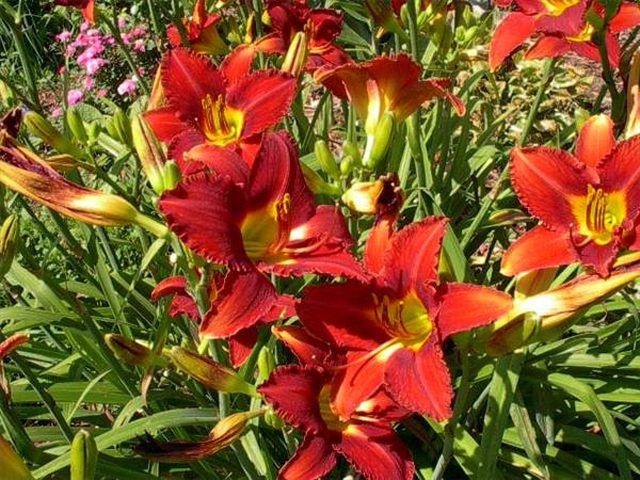Bulbs
Flower Basics
Flower Beds & Specialty Gardens
Flower Garden
Garden Furniture
Garden Gnomes
Garden Seeds
Garden Sheds
Garden Statues
Garden Tools & Supplies
Gardening Basics
Green & Organic
Groundcovers & Vines
Growing Annuals
Growing Basil
Growing Beans
Growing Berries
Growing Blueberries
Growing Cactus
Growing Corn
Growing Cotton
Growing Edibles
Growing Flowers
Growing Garlic
Growing Grapes
Growing Grass
Growing Herbs
Growing Jasmine
Growing Mint
Growing Mushrooms
Orchids
Growing Peanuts
Growing Perennials
Growing Plants
Growing Rosemary
Growing Roses
Growing Strawberries
Growing Sunflowers
Growing Thyme
Growing Tomatoes
Growing Tulips
Growing Vegetables
Herb Basics
Herb Garden
Indoor Growing
Landscaping Basics
Landscaping Patios
Landscaping Plants
Landscaping Shrubs
Landscaping Trees
Landscaping Walks & Pathways
Lawn Basics
Lawn Maintenance
Lawn Mowers
Lawn Ornaments
Lawn Planting
Lawn Tools
Outdoor Growing
Overall Landscape Planning
Pests, Weeds & Problems
Plant Basics
Rock Garden
Rose Garden
Shrubs
Soil
Specialty Gardens
Trees
Vegetable Garden
Yard Maintenance
How to Plant a Seed
How to Plant a Seed. Whether you want to plant your own garden or grow a small pot of herbs for your kitchen, you can save a tremendous amount of money by starting your plants from seed. Seed can be purchased at local garden centers and can be harvested from the fruits and vegetables that you buy from the grocery or local farmers market. Not only...

Whether you want to plant your own garden or grow a small pot of herbs for your kitchen, you can save a tremendous amount of money by starting your plants from seed. Seed can be purchased at local garden centers and can be harvested from the fruits and vegetables that you buy from the grocery or local farmers market. Not only is gardening rewarding for adults, but it can also be an excellent way to spend more time with your children. If you are new to the world of gardening, here is what you need to know about planting a seed.
Things You'll Need
Clay or peat pots
Seed
Potting soil/seed starting blend
Water
Tray for holding pots
Tweezers
Pencil
Large toothpicks
Clear plastic wrap
Decide what types of plants you want to grow. Grab some gardening books from your local library and research which plants will work best in your area. You'll want to consider how much space you have, indoors and outdoors, to grow certain plants and choose your seeds accordingly.
Gather seed. For extra savings, pick up discounted seed at your local garden center at the end of the gardening season. Prepackaged seed remains a viable for quite some time, so it won't hurt the seed to be stored over the fall and winter months. You can also harvest seed from the fruits and vegetables that you purchase at the grocery. Seed from bell peppers, tomatoes, melons and cucumbers, which are normally discarded, can be set aside, dried on paper towel, and stored in plastic bags for later planting.
Purchase some inexpensive, small clay pots or peat pots and a good quality potting mix, or seed starting formula. If you prefer, you can also recycle paper and Styrofoam cups, plastic soda bottles and milk cartons for use as planters.
Make some space, if you'll be planting lots of seed, where you can set the trays of planted seed while they are growing. A room with good sunlight, or on a spare table with a warming lamp are good locations.
Fill pots to the top with potting soil, then add enough water to moisten the soil but not so much that it becomes soupy. Know that 1/4 cup of water per small pot is sufficient, and you can add more water if it is still too dry. Use a fork to stir the soil and distribute the water.
Use the pencil to make three or four evenly spaced holes, at least 1/2 inch deep, in the soil. For each plant that you hope to grow, plant three to four seeds per pot. Once the seeds have germinated and start to sprout and grow for a few weeks, you will then be able to remove the excess plants and leave the two strongest growers. For melons, zucchini and tomatoes, plant only two seeds per pot, as these plants will need a lot of room to grow once they are transplanted in the garden.
Drop a seed in each preformed hole, and then cover lightly with surrounding soil. Add another 1/4 cup of water to each pot but do not stir.
Form a miniature greenhouse by placing one large toothpick in the center of each pot. Tear off enough plastic wrap to cover the length and width of the tray loosely. If you need to use two pieces of wrap, you can lightly tape them together lengthwise. Loosely drape the wrap over the tray, using the toothpicks as supports. Press the wrap down against the bottom of the tray and tape down to secure, if necessary. This simply helps your seeds to germinate more quickly by retaining more moisture and a warmer environment.
Tips & Warnings
Keep the pots moist during the germination process. Fill a spray bottle with lukewarm water and spritz the soil at least every two or three days.
Allow each plant to get two or three sets of leaves before weeding out the weaker seedlings.
Some seed, such as corn, green beans and peas, can be planted directly in the garden.
Place your pots in an area where your pets won't be able to access them.